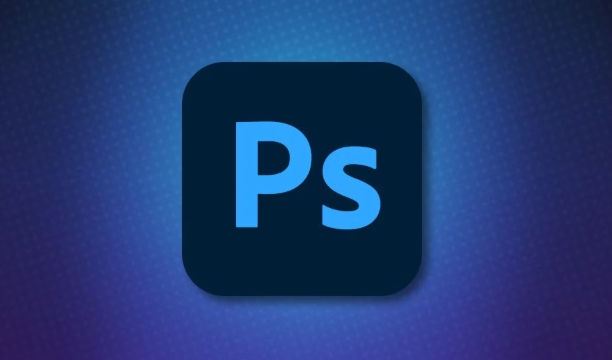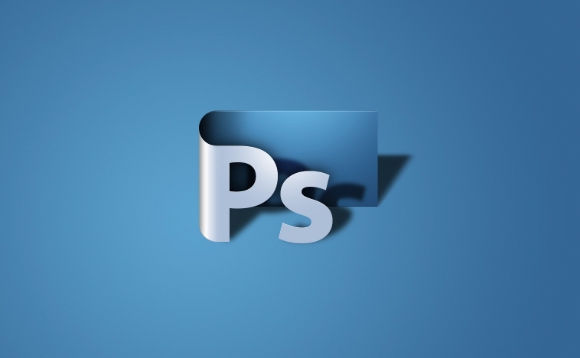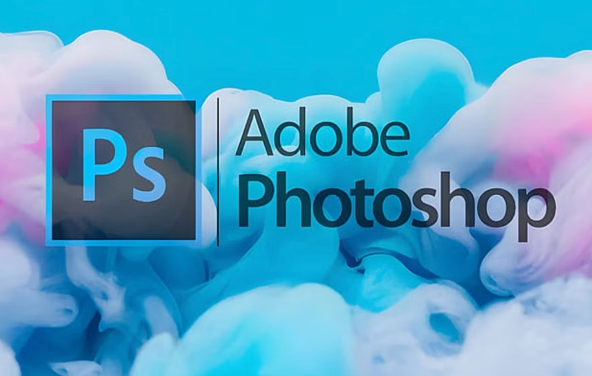The key to creating a soft blur effect in Photoshop is to master the three core steps of Gaussian blur, soft light layer and mask control; first use Gaussian blur to create basic soft focus, after copying the layer, set the appropriate radius through "Filter → Blur → Gaussian blur" and adjust the opacity, and at the same time, erase the parts that do not need to be blurred with the mask; then superimpose the soft light layer to enhance the sense of atmosphere, fill the new layer with 50% gray and set it to "Soft Light" mode, and use a white brush to lightly paint the target area to improve the softness; finally use a mask to control the virtual and real distribution, add a black and white mask, and use a white brush to brush out the background blur area and erase the main part, adjust the transition nature, so as to achieve a soft focus effect with clear focus, hazy background and clear layers.

It is actually not difficult to create a soft blur effect in Photoshop. The key is to master several core steps and layer processing techniques. The key is to control the degree of blurring so that the picture looks natural and without losing details.

Use Gaussian blur to create basic soft focus
The most direct way is to use the "Gaussian fuzzy" filter to achieve it. This function can evenly blur the image, suitable for background blur or overall soft focus effects.

The operation method is very simple:
- Copy the original layer to avoid destroying the original image;
- Find "Filter → Blur → Gaussian Blur" and the settings window pops up;
- The radius value is adjusted according to the size of the picture. Generally, try starting from 10, and adjust it while watching the preview;
- After the blur is completed, appropriately reduce the layer opacity to make the blur more natural.
Be careful not to be too ruthless once, otherwise it will easily appear fake. It is recommended to use it with a layer mask to wipe out the parts that do not need to be blurred.

Overlay soft light layers to enhance the atmosphere
After the basic blur, you can also superimpose a soft light layer to enhance the overall softness and layering.
The following methods are as follows:
- Create a new blank layer and fill it with 50% gray;
- Change the blending mode of this layer to "Soft Light";
- Use a soft white brush to gently apply the area you want to brighten or soften;
- Control the flow and opacity of the brush to avoid excessive attacks.
This step can make the photo look like a layer of soft light, which is especially suitable for skin modification and background transition in portrait photography.
Use masks to control virtual and real distribution
The truly beautiful soft focus is not the same blurry picture, but has key points and layers. At this time, you have to rely on layer masks to control locally.
You can do this:
- Add a black and white mask to the blur layer;
- Use a white brush to brush out where you want to retain the blur (such as the background);
- Use a black brush to erase the areas you don’t want to blur (such as the character’s subject);
- Adjust the softness and transparency of the brush to make the transition more natural.
This allows the focus to be focused on the main body of the picture, while the background remains hazy and the visual effect is more layered.
Basically, these methods can be combined to create a good soft focus effect. The key is to try a few more times to find the parameters and techniques that suit your picture.
The above is the detailed content of How to create a soft focus effect in Photoshop. For more information, please follow other related articles on the PHP Chinese website!

Hot AI Tools

Undress AI Tool
Undress images for free

Undresser.AI Undress
AI-powered app for creating realistic nude photos

AI Clothes Remover
Online AI tool for removing clothes from photos.

Clothoff.io
AI clothes remover

Video Face Swap
Swap faces in any video effortlessly with our completely free AI face swap tool!

Hot Article

Hot Tools

Notepad++7.3.1
Easy-to-use and free code editor

SublimeText3 Chinese version
Chinese version, very easy to use

Zend Studio 13.0.1
Powerful PHP integrated development environment

Dreamweaver CS6
Visual web development tools

SublimeText3 Mac version
God-level code editing software (SublimeText3)
 What are some common keyboard shortcuts that can significantly speed up a Photoshop workflow?
Jul 07, 2025 am 12:17 AM
What are some common keyboard shortcuts that can significantly speed up a Photoshop workflow?
Jul 07, 2025 am 12:17 AM
Mastering Photoshop shortcut keys can significantly improve work efficiency. 1. Zoom and Navigation: Z key activates the zoom tool, Space bar Drag the quick pan canvas, double-click Z key to adapt the image to the window size, Ctrl/Cmd/-adjust the zoom level; 2. Layer management: Ctrl Shift N creates a new layer, Ctrl G group, Ctrl E merges layers, Shift [or] moves the layer level, Ctrl Click on the layer thumbnail to quickly select content; 3. Select and brush adjustment: M and L to switch rectangular marquee and lasso tools respectively, Shift adds/Alt to subtract selections, [or] adjusts the brush size, Shift [or] adjusts the hardness, so as to achieve efficient editing and smooth operation.
 How to restore an old photograph in Photoshop
Jul 12, 2025 am 12:40 AM
How to restore an old photograph in Photoshop
Jul 12, 2025 am 12:40 AM
Repairing old photos can be achieved through key steps in Photoshop. The first is scanning and preliminary adjustment, including high-resolution scanning, cropping images, rotation correction and brightness/contrast adjustment; the second is to remove scratches and stains, use the imitation stamp tool to deal with large-area damage, repair tools to deal with small scratches, and pay attention to low transparency overlay and layering operations; the third is optional coloring and color tuning, and use the "hue/saturation" adjustment layer to increase retro tone; the last is to polish and output, check details, adjust sharpness, confirm resolution and select a suitable format to save. The entire process requires patience and meticulousness, especially when dealing with key parts such as the facial features of the characters.
 How to create a custom gradient in Photoshop
Jul 07, 2025 am 12:24 AM
How to create a custom gradient in Photoshop
Jul 07, 2025 am 12:24 AM
The key to creating a custom gradient in Photoshop is to master the use of the gradient editor. 1. First select the gradient tool (shortcut key G), click the top preview bar to open the "Gradge Editor"; 2. Click "New" in the editor to start customization, and you can also modify the style in the built-in gradient library; 3. Set color transition by adding, deleting and dragging the color slider, and double-clicking the slider to select specific colors; 4. Adjust the opacity stop point to control the transparency changes, click the diamond icon to add the transparency node; 5. Select linear, radial and other types in the gradient tool options to match design needs, and you can get started quickly after you are proficient.
 What are the key differences between Layer Masks and Vector Masks, and when should each be used?
Jul 16, 2025 am 12:03 AM
What are the key differences between Layer Masks and Vector Masks, and when should each be used?
Jul 16, 2025 am 12:03 AM
LayerMasks and VectorMasks are used in Photoshop with similar uses but different principles. LayerMasks is based on pixels and uses grayscale values to control the display and hiding of layer areas. It is suitable for photo detail editing, soft transition effects and fine brush adjustments, but zooming in may lead to jagging; VectorMasks is based on vector paths and shapes, and has resolution irrelevant resolution. It is suitable for graphics that require clear edges such as logos, icons or text frames, and can be scaled losslessly; the selection is based on the content type (photo or graphics), whether the size needs to be greatly adjusted, and the required edge effects (soft or sharp), and sometimes combined use can give full play to their respective advantages.
 How can vector shapes be created and manipulated in Photoshop?
Jul 14, 2025 am 12:01 AM
How can vector shapes be created and manipulated in Photoshop?
Jul 14, 2025 am 12:01 AM
TocreateandmanipulatevectorshapesinPhotoshop,usetheShapeToolstodrawvectorpathsonshapelayers,editanchorpointswiththeDirectSelectionTool,combineorsubtractshapesusingpathoperations,andrasterizewhennecessary.First,selectthedesiredshapetool—Rectangle,Elli
 What are artboards in Photoshop
Jul 14, 2025 am 12:04 AM
What are artboards in Photoshop
Jul 14, 2025 am 12:04 AM
AnartboardinPhotoshopisamovable,resizablecontainerthatactsasanindividualcanvaswithinasingledocument.Itallowsdesignerstocreatemultiplelayoutsordesignvariationssidebyside,eachwithitsownsizeandcontent.Artboardsareidealforweblayouts,appscreens,banners,an
 How to select a specific color range in Photoshop
Jul 12, 2025 am 12:37 AM
How to select a specific color range in Photoshop
Jul 12, 2025 am 12:37 AM
ToselectaspecificcolorrangeinPhotoshop,usetheColorRangetool.1.GotoSelect>ColorRangeandclicktheeyedropperonthedesiredcolor.2.AdjusttheFuzzinessslidertocontrolselectionbreadth.3.AddmoresampleswithShift-clicks.4.EnableLocalizedColorClustersforcomplex
 What is the purpose of guides, grids, and rulers in achieving precise layouts?
Jul 15, 2025 am 12:38 AM
What is the purpose of guides, grids, and rulers in achieving precise layouts?
Jul 15, 2025 am 12:38 AM
Rulers provide positioning references, Guides implement element alignment, and Grids builds a systematic layout. 1. Rulers display position coordinates, and can drag out reference lines to check element deviations and judge distance specifications; 2. Guides are virtual lines dragged out from rulers, accurately align elements and divide areas, and support locking and color settings; 3. Grids consists of rows and columns to control the overall layout rhythm, and adapt to responsive design, which are common, such as 12-column web page grids and 8px mobile grids. The combination of the three improves layout efficiency and professionalism.






